Table of Contents
INTRODUCTION
Do you know how much energy LED lights save? The US Department of Energy says they can last 25 times longer and use at least 75 percent less energy. If you’re in the business of selling lighting and electrical supplies, then it might be worth thinking about selling these efficient LED bulbs to your customers.
If you’re an electrician or agent and you need to illuminate an outdoor parking lot, maybe it’s time to learn about how LED Parking Lot lights can work as a replacement. You might be wondering: “How much money do I save from switching to LED lights?” “What kind of LED light is best for parking lots? “Do LED Parking lot lights come with energy-saving controls?
Have you ever considered that LED Parking Lot Fixtures come in different shapes and sizes? Moreover, they can be installed on poles or hung on the sides of buildings. If you’re wondering how to choose the best one for your parking lot, let us help you.
Want to outshine the competition? Read on to learn about LED Parking Lot Lights and area lighting. We’ll cover everything you need to know, so you can answer any question your customers or distributors ask you. Fireflier Lighting has over 10 years of experience in manufacturing LED Parking Lot Lighting Fixtures and we will give you a complete guide to choose the best solutions for your applications.
The definition of LED Parking Lot Lights
Parking lot lights, also known as LED Shoebox lights, are an essential component to any well-lit parking lot. LED Parking Lot Lights are high-performing, specially designed for the purpose of lighting up parking lots safely. They are trusted by many parking lot owners around the globe, because they are known for their cost-efficiency and energy efficiency. Parking Lot Lights provide bright, quality light so that the parking lot can be safe for car parking.
Outdoor Parking Lot Lights are actually a type of all-purpose area light. They can be used for flood lighting or sports lighting, and the possibilities really are endless.
Why choose LED Lights in Parking Lots?
Cost-savings
Turning to LED lights can help reduce your energy and maintenance costs. LED lights can last as much as 100,000 hours and will not need to be replaced as often as HID lights. The average life is usually about 5 years to 25 years.
Energy-efficient
LEDs, unlike other light bulbs, are highly energy-efficient. The lights convert 95% of the energy consumed into light, while the other 5% is converted into heat, which is then managed by the fixture’s internal cooling system.
Stylish
The old, dark boxes are not exactly modern or inviting. While they may work in the back of the warehouse, they do not look so good in retail areas and other areas. New LED Parking Lot Lights are more attractive and give the area an updated look.
Light Performance
One other reason to choose LED lights is their quality of light. LEDs give a much better Color Rendering Index – from 50 in metal halide to about 80 in LED. They also have no buzz or flicker, scientifically known as Total Harmonic Distortion, which makes them safer and easier on the eyes.
Easy Maintenance
Would you like to increase your energy efficiency and reduce maintenance costs? As LED bulbs last up to 20 years, you won’t need to worry about replacing those costly ballasts or swapping out those expensive bulbs. LED lights also come with the flexibility to adjust brightness and hue. You can instantly adjust your lights according to your needs, whether that means following the municipal lighting code or decreasing light pollution.
Safety
Ever walked through a dark parking lot all by yourself? If you have, then you would understand the sense of security that parking lot lights provide. Giving hope and light in the darkness of night, parking lot lights give you confidence while walking to your car alone.
Energy Efficiency Metrics
Just as any owner of a business, you’re focused on saving money and energy. Different metrics measure energy efficiency. Efficiency, for instance, is just one metric among many that can be used to describe the efficiency of Outdoor LED Parking Lot Lights. It’s one of the most basic metrics, but it doesn’t tell the whole story. There are also lighting efficacy and lighting power density metrics. Here’s how they work.
Efficiency (LE)
The efficiency of a device is how well it turns inputs into outputs. Luminaire efficiency is the light that leaves the luminaire divided by the light coming from the bare lamp. The luminaire efficiency is unitless because both values have the same units.
Different luminaires will have different efficiency values. This is influenced by the light loss in the fixture. For LED parking lot and street lights, the luminaire efficiency can be up to 95%.
Efficacy (LPW)
Efficacy in lighting is measured in lumens per watt (lm/W). The greater the efficacy, the more light generated for the same watts.
Fireflier’s Outdoor LED Parking Lot Lights can get 130~150 lumens per watt because of the excellent chip used. So 120W-150W LED can replace 400W metal halide lamps.
Lighting Power Density (LPD)
Lighting power density is the total power of the installed lights, including the driver or ballast, multiplied by the number of lights divided by the area they are installed in. This metric has been used for many years to measure energy efficiency, but it does not actually focus on energy.
The difference between power and energy is important because it will show how much power is being used. Power is measured in watts, whereas energy is measured in watt-hours. Lighting power density calculations will not show any significant energy savings due to the use of controls.
Lighting Zone
To provide as much information about the area lighting zone, both the ASHRAE/IESNA Std. 90.1 and IES RP-33 exterior lighting zone definitions are combined below.
| Lighting Zone | Description |
|---|---|
| Zone 1 | Developed areas of national parks, state parks, forest land, and rural areas |
| Zone 2 | Areas predominantly consisting of residential zoning, neighborhood business districts, light industrial with limited nighttime use and residential mixed-use areas |
| Zone 3 | All other areas not classified as lighting zone 1, 2 or 4 |
| Zone 4 | High-activity commercial districts in major metropolitan areas as designated by the local land use planning authority |
Allowances include a base allowance plus tradeable allowance
There are three types of outdoor LED parking lot lights power limits. These include watts per square foot, watts per linear foot, and watts per location or application. The exterior power limits are separated into two categories based on the critical nature of the application.
| Allowance | Location | Zone 1 (LZ-1) | Zone 2 (LZ-2) | Zone 3 (LZ-3) | Zone 4 (LZ-4) |
| Base Site Allowance | ————— | 350W | 400W | 500W | 900W |
| Tradeable Allowance | Uncovered Parking Areas | ||||
| Parking areas and drives | 0.03W/ft2 | 0.05W/ft2 | 0.06W/ft2 | 0.08W/ft2 | |
| Building Grounds | |||||
| Walkways and ramps less than 10 feet wide | 0.5W/linear foot | 0.5W/linear foot | 0.6W/linear foot | 0.7W/linear foot | |
| Walkways and ramps10 feet wide or greater Plaza areas, Special Feature Areas | 0.10W/ft2 | 0.10W/ft2 | 0.11W/ft2 | 0.14W/ft2 | |
| Building facades | No allowance | 0.075 W/ft2 of gross above-grade wall area | 0.113 W/ft2 of gross above-grade wall area | 0.15 W/ft2 of gross above-grade wall area | |
| Automated teller machines (ATM) and night depositories | 135 W per location plus 45 W per additional ATM per location | ||||
| Uncoveredentrances and gatehouse inspection stations at guarded facilities | 0.5W/ft2 of area | ||||
| Uncoveredloading areas for law enforcement, fire, ambulance and other emergency service vehicles | 0.35W/ft2 of area | ||||
| Drive-up window and doors | 200 W per drive-through | ||||
| Parking near 24-hour retail entrances | 400 W per main entry | ||||
PARKING LOT LIGHTING DESIGN
Parking lots have a variety of different lighting options, and this page showcases two of them. The first parking lot has a configuration meeting the FEMP-designated requirements, while the second does not. These two designs show the difference in light given off by the same layout and spacing between luminaires.
There are three key components to parking lot lighting design: color quality, distribution, and luminaire efficacy. These three components will affect the lighting values of the space as well as the overall energy usage.
DESIGN SCENARIO – GENERAL LUMINAIRE
Luminaire Basics: 14,725
Luminaire lumens: 288 W input watts
LER: 51
Lighting Information: Average: 7.4 fc
Maximum: 10.5 fc Minimum: 0.3 fc Average:Minimum: 12:1
Maximum:Minimum: 35:1
% of points 1–5 fc: 76%
LPD(Lighting Power Density): 0.13 W/sf
This luminaire uses a 250 W pulse-start metal halide lamp which draws 288 W along with the ballast. The light temperature is in the 3500–4500-kelvin range, with a CRI of 70. The LER is 51 lumens per watt. The distribution pattern is batwing, which is common among parking lot lights.
The luminaire with this design meets the minimum requirement from RP-20-98, but it exceeds the recommended uniformity of 20:1. The calculated metrics of uniformity (maximum:minimum) are fair, with 76% of points being between 1 and 5 fc.
The LPD of this design is lower than what some energy codes prescribe. A typical range for existing and new installations is LPDs between 0.10 and 0.15 W/sf.
DESIGN SCENARIO – Fireflier Lighting LUMINAIRE
Luminaire Basics: 10,758
Luminaire lumens:147 W input watts
LER: 135
Lighting Information: Average: 3.4 fc
Maximum: 5.6 fc Minimum: 0.4 fc Average:Minimum: 9:1
Maximum:Minimum: 14:1
% of points 1–5 fc: 95%
LPD(Lighting Power Density): 0.03 W/sf
With a color quality of 4000K and a CRI in the 70s, the Fireflier Lighting’s 150W LED Parking Lot Light has good color distribution. It also has 130 lm/W LER and emits no uplight. The slightly wider distribution leads to better uniformity.
This design can provide a similar minimum luminance as a typical luminaire. It is acceptable in the RP-20 test for uniformity with a maximum of 20:1. In addition, this design has more measurement points in a range that is between 1 and 5 lux. The LER is important, but the luminous efficiency must be high enough to produce the desired amount of light.
The LER of the selected luminaire is 150% greater than the LER of a general luminaire design. However, because light distribution was specifically tailored to the luminaire, the LPD is 46% less. This optimized distribution saves more energy while still offering adequate lighting and quality.
Find the best lamp for your outdoor Parking Lot
Wattage/Power
You should start by paying attention to the wattage of the light. LED lights have a higher lumen output per watt than other options. This is what you should focus on when you’re thinking about efficient lighting. You’ll be able to find LED lights that offer different lumen outputs. If you would like the light to cover a range of 15-20 feet, 16000 to 20000 lumens is a great choice. If you would prefer the light to cover a range of 20-30 feet, 40,000 lumens is a splendid choice.
Some replacement reference:
When you’re looking for a 400 watt replacement, LED shoebox lights with 100 watts to 150 watts can provide that amount of light. You’ll need 12,000 to 20,000 lumens for a 400 watt replacement. Our 300W to 480W LED Parking Lot Lights will be enough to replace a 1000W Metal Halides which requires usually 30,000 to 60,000lumens.
Mounting Height
Please don’t use your parking lot lights to illuminate the sky. The height of your lights, depending on the size of your parking lot, can range from 12 ft. to 35 ft. The location of your pole will depend on the size of your parking lot. If you have a large parking lot, you may want a taller pole and vice versa.
You also need to consider the area you operate in. Some areas are densely populated while others are more rural. In urban areas, it might be necessary to have shorter poles that won’t extend past your property and cause glare. In rural areas, taller poles will work just fine.
Poles Distance
To decide on the spacing of your fixtures, A rule of thumb to go by: The higher your mounting height is, the fewer poles you will need.
For example, if you are using your lights in an area with more people, you should put more poles closer together. If you are using your lights in an area with less people, you will need fewer poles farther apart.
Distribution Patterns
Installing new LED lights in your parking lot? You’ll also want to think about the distribution of the lighting. LED Parking Lot Light fixtures typically have two types: Type III Type IV and Type V. Type III is for roadway lighting and parking areas.
Type III Distribution Pattern
The type III distribution is a good choice for parking lots, as it will throw light forward and to the sides. It can be used either as perimeter lighting or back-to-back on more central pole locations.
Type III luminaires are best used where the width of the area does not exceed 2.75 times the height of the mounting height. The 40-degree lateral width is preferred for Type III distribution.
Type IV Distribution Pattern
The type IV light distribution produces a semicircle of light with minimal backlighting. This type of beam is most suited for illuminating the perimeter of parking lots and industrial buildings. This beam has the same intensity at all angles from 90° to 270°.
Type V Distribution Pattern
Type V produces a square umbrella lighting pattern for inside locations. It has a symmetrical distribution of light, which is the same at all angles. This type is perfect for large, commercial parking lots.
Color Temperature
LED Lights have different color temperatures from 3000K, 4000K, 5000K to 6000K. 5000K is our recommended color temperature for outdoor LED Parking Lot Light. However, if you prefer a warm color, a 3000K type is also available.
Installation Type
Fireflier offer different mounting brackets for outdoor LED Parking Lot lights including Slip fitter mount, Yoke mount, U bracket mount, Wall mount, Square/round pole mount.
Slip Fit Mount LED Parking Lot Lights are the most popular type of mount. They slide up to 2 3/8″ over a standard light pole and the head is adjustable to shine in the right direction. Bolts are used to secure it to the pole.
LIGHTING CONTROLS
Photocell Sensor
LED Parking lot light with photocell sensor is the most popular control used . The photocell is a sensor that turns the lights off during the day and on during night. It can be either a three-pronged blue cap or yellow, depending on voltage level. A bypassing black cap can also be used to override the photocell for use with timed or remote switches. You can get a 5- or 7-prong version which offers additional features, including dimming.
Motion sensor
Motion sensors are a smart way to save on energy at your facility. Motion sensor technology comes in many different forms, but the goal is always the same: to allow automatic activation of lights when they’re needed. LED Parking Lot Light with Motion sensor come in two types: active and passive. Active sensors, like those found in our parking lot poles, use microwaves. Passive sensors use infrared and light-sensing technology to be activated.
Solar Powered LED Parking Lot Light
Solar LED Parking Lot Lights are perfect for illuminating an open area. These solar parking lights are more energy-efficient than any regular parking lot light, and they also add safety. They’re perfect for illuminating a parking lot, private street, driveway, military Facilities, or any other open area.
With no wiring needed to install these solar area lights, you can save money by installing them on your own. In addition, the Solar Parking Lot Light includes built in sensors to automatically turn on at night and off during the day. No longer will you have to worry about your safety when walking down dark streets at night; simply place the Solar Parking Lot Light where it will do the most good and rest assured that your clients will be safe.
Fireflier provides a wide range of power from 4W to 120W Solar Parking Lot Lights.
Interested in LED Parking Lot Light?
Fireflier is a lighting manufacturer who has over 10 years experience in LED Parking Lot Lighting’s research and development. We write this article to help you have a clear understanding about LED Parking lot lights.
If you are from the USA or Canada, you can buy our LED Parking Lot Light online from this link:https://mylightings.com/led-area-lights/. All prices here are with free shipment and fast delivery from the USA warehouse.
If you have any other question, please feel free to contact us. You can email to [email protected] or message us by whatsapp:+86 13088869086. We are always here to help you!
Reference:
https://www.energy.gov/sites/default/files/2014/02/f7/parking_lots_guide.pdf

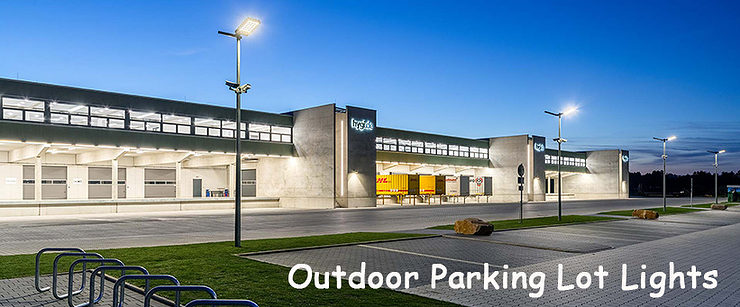
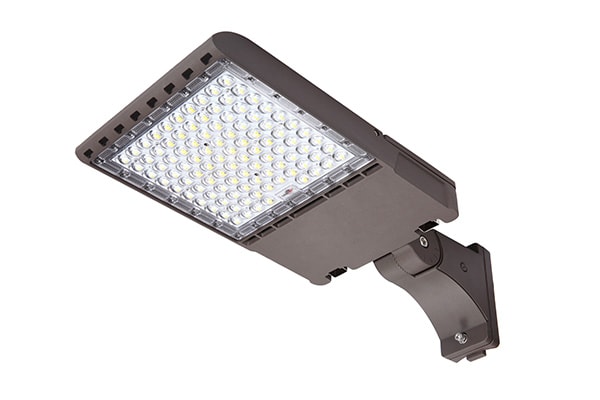
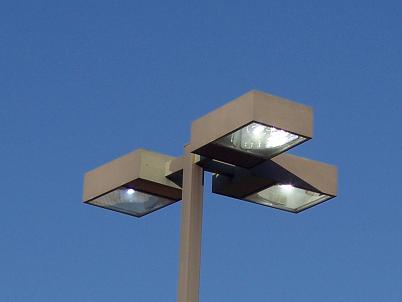
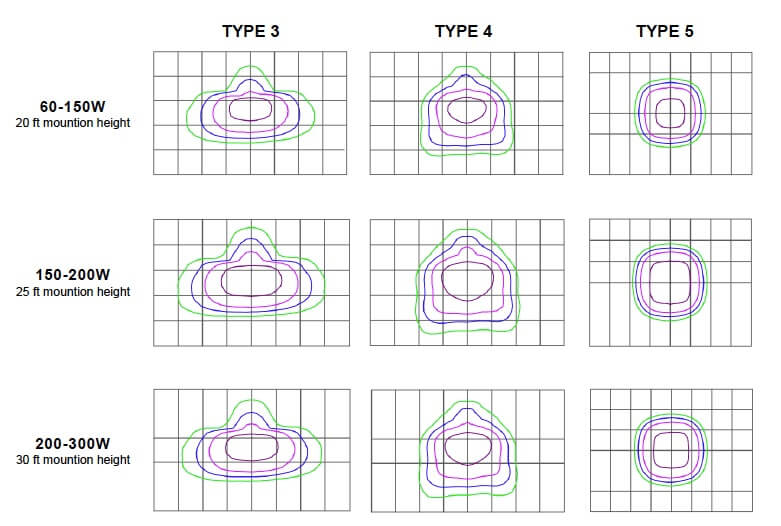


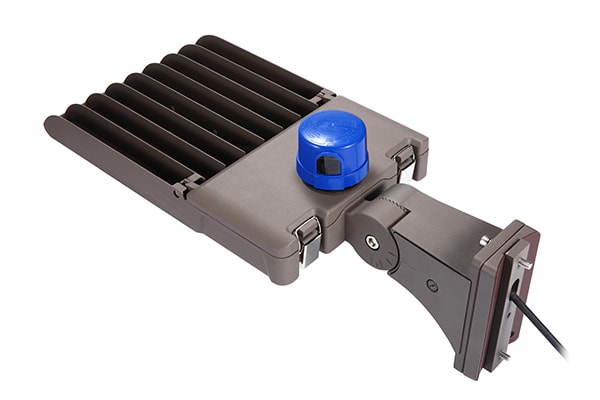
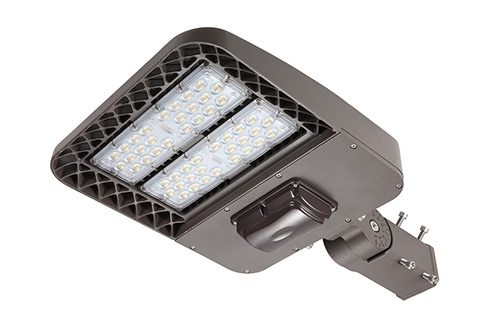
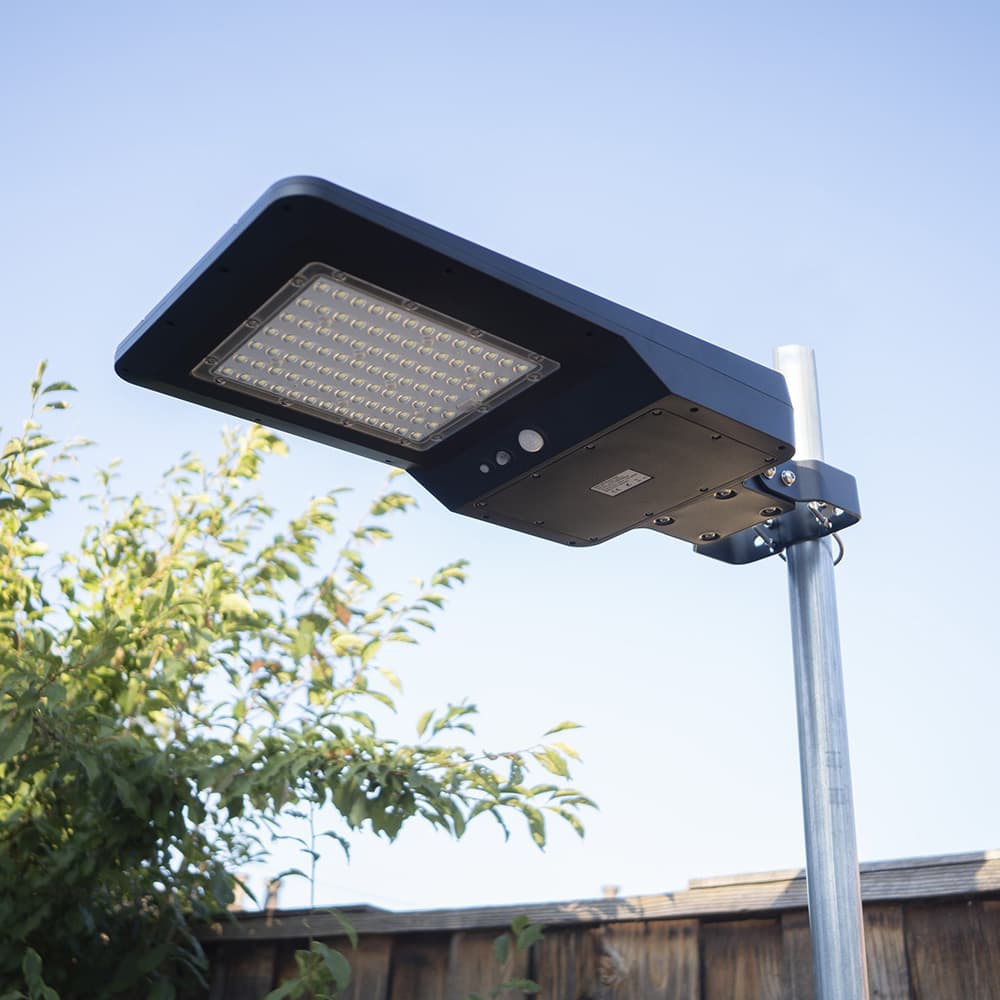
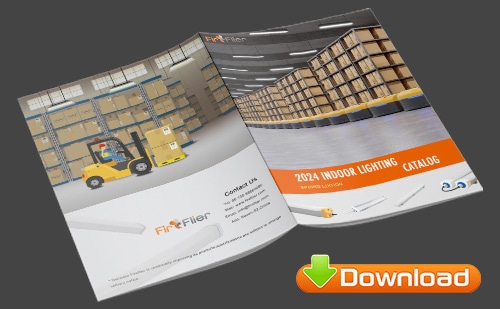
Comment *Wow! Very informative and impressive lines. Transformative outdoor lighting installation. Enhance curb appeal and safety simultaneously. Consider incorporating solar-powered fixtures for eco-friendly brilliance.